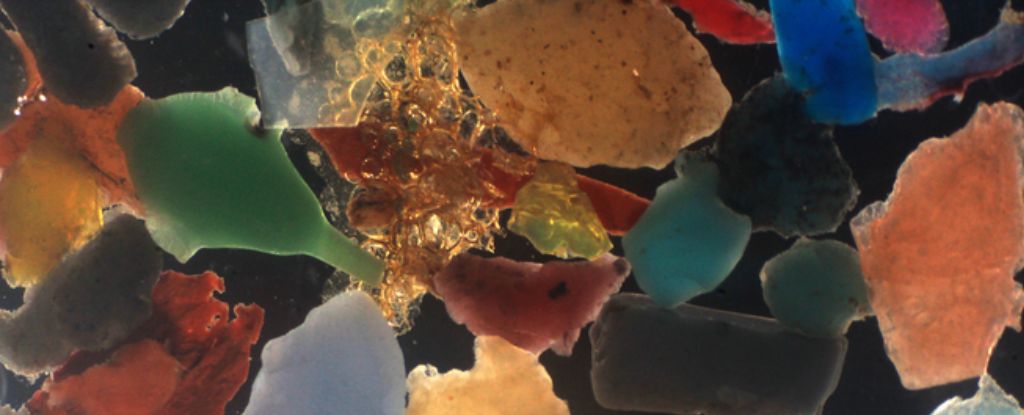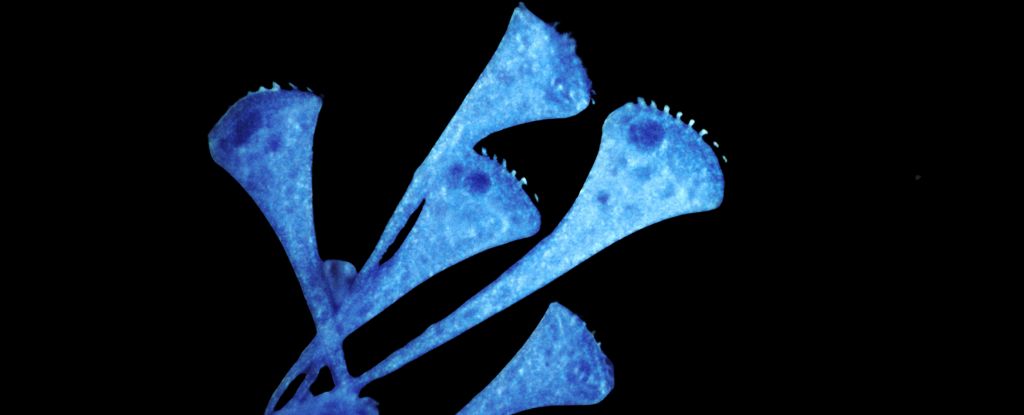Plastic pollution is out of control. Every year more than 8 million tons of synthetic polymers get into the ocean, and while some sinks to the groundreturns the coastor collects in the in the middle of nowherea significant part is not that easy to explain.
All of the missing plastic is a mystery, but some researchers suspect hungry microbes are partly to blame.
Experiments in the laboratory have now shown that a species of marine bacteria known as Rhodococcus rubercan slowly break down and digest plastic Polyethylene (PE).
Mainly used in packaging, PE is the most commonly manufactured plastic in the world and although it is not clear if R. ruber nibbles on this waste in the wild, new research confirms that it is at least capable of doing so.
previous studies have found tribes of R. ruber swim in dense cell films on sea plastic. Also, first research in 2006 recommended the plastic underneath R. ruber broke faster than normal.
The new study confirms this.
“This is the first time we’ve proven in this way that bacteria actually digest plastic into CO2 and other molecules,” says microbiological ecologist Maaike Goudriaan from the Royal Netherlands Institute for Sea Research (NIOZ).
To mimic the natural decomposition of plastic on the sea surface, Goudriaan and her colleagues exposed their plastic samples to UV light and placed them in artificial seawater.
“The treatment with UV light was necessary because we already know that sunlight partially breaks down plastic into bite-sized chunks for bacteria,” explained Goudrian.
Next, the team introduced a variety of R. ruber to the scene.
By measuring the carbon isotopes released from decaying plastic called carbon-13, the authors estimated that the polymers in their experiments were degrading at a rate of about 1.2 percent per year.
The team can’t be sure how badly the UV lamp degraded the plastic compared to the activity of the microbes, but the bacteria clearly played a role. Bacterial samples after the experiment showed fatty acid membranes enriched in carbon-13.
The rate of plastic degradation identified in the current study is way too slow to completely solve the problem of plastic pollution in our oceans, but it does indicate where some of our planet’s missing plastic may have gone.
“Our data show that sunlight may have thus degraded a significant amount of the floating plastic that has entered the oceans since the 1950s,” says Microbiologist Annalisa Delre.
Microbes could then have entered and digested some of the sun’s remnants.
Since 2013, researchers have warned that microbes are likely to thrive on patches of plastic in the ocean, creating a synthetic ecosystem known as the “plastisphere.”
There is even evidence that some of these microbial communities adapt eating different types of plastic.
Previous studies have identified specific bacteria and fungi in the countryside and in the seawho seem to eat plastic. But while this knowledge might help us better Recycle our waste Before it ends up in the wild, its other uses are controversial.
Some scientists have suggested that we release plastic-eating equivalents at pollution hotspots like this Great Pacific Garbage Patch.
others are not so sure that’s a good idea. engineered enzymes and bacteria Plastic breaking down may sound like a great way to make our waste disappear, but some experts are concerned about unintended side effects on natural ecosystems and food webs.
After all, breaking down plastic isn’t necessarily a good thing. Microplastics are much more difficult to remove than larger pieces, and these tiny remnants could infiltrate food webs. For example, filter feeders might mistakenly grab tiny pieces of plastic before microbes do.
in one to learn In 2020, every single seafood sample tested at a market in Australia contained microplastics.
What does that do to the health of humans or animals completely unknown.
“Prevention is much better than cleaning up” argued Goudriaan.
“And only we humans can do that.”
The study was published in Marine Pollution Bulletin.





